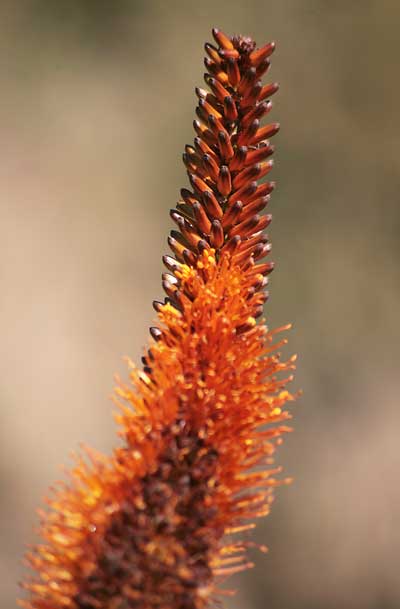|
Botanical name |
Aloe castanea |
|
Other names |
Cat's tail aloe; katstertaalwyn (Afrikaans) |
|
|
Asphodelaceae |
|
Dimensions |
3 to 4 m tall, with multiple rosettes, usually starting with one stem dividing higher up; width can exceed 3 m; a rosette can exceed 70 cm in width |
|
Description of stem |
Lower leaves drooping, dead leaves persist around stem, lowest part bare, smooth, grey |
|
Description of leaves |
50 cm slender, yellow-green to light green, pointing upwardly with outer leaves opening widely, finely toothed on edges only; dry leaves persist apart from on the lowest part of the main stem |
|
Description of flowers |
Single, gracefully curving racemes, often over 1m long in well-growing plants; open flowers form a bright orange patch on the slender raceme, rich in nectar (July to August), may have up to six racemes from one rosette |
|
Description of seed/fruit |
Small, green pods |
|
Description of roots |
|
|
Variation |
|
|
Propagation and cultivation |
Transplants easily, even older plants, grows easily from seed, little watering, avoid shade |
|
Uses |
Garden plant, profuse volumes of pollen makes this aloe popular with bee farmers; ashes from the dry leaves has been used to protect grain from weevils |
|
Ecological rarity |
Common, not threatened |
|
Other |
|
|
Pests and diseases |
Snout beetles |
|
Location |
Bushveld, grassland hills |
|
Distribution (SA provinces) |
Mpumalanga, Limpopo |
|
Country |
South Africa |

.jpg)

